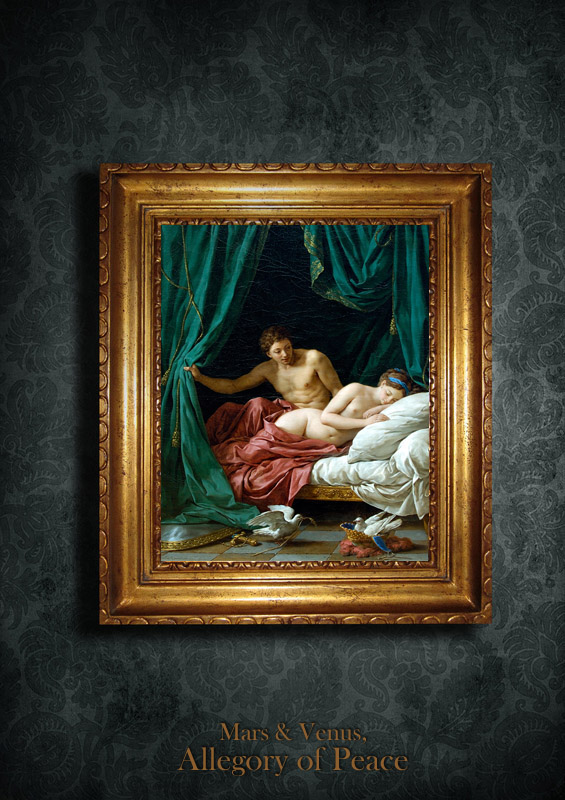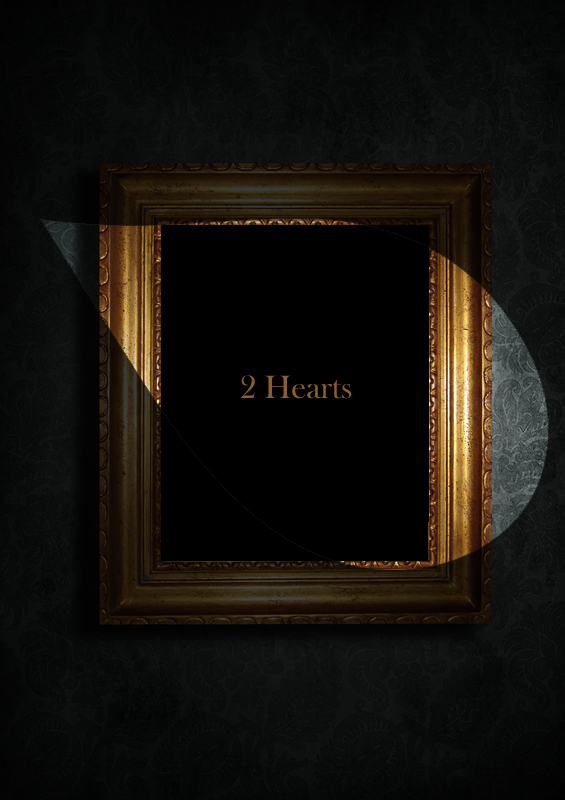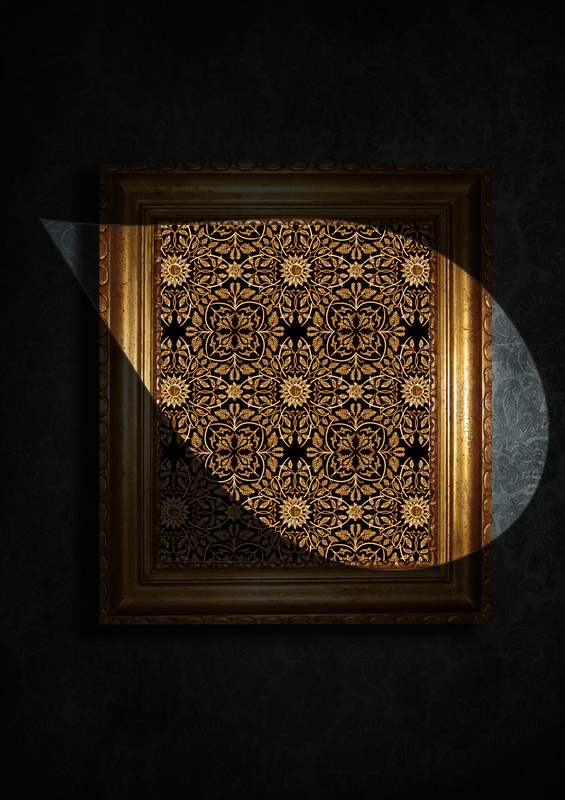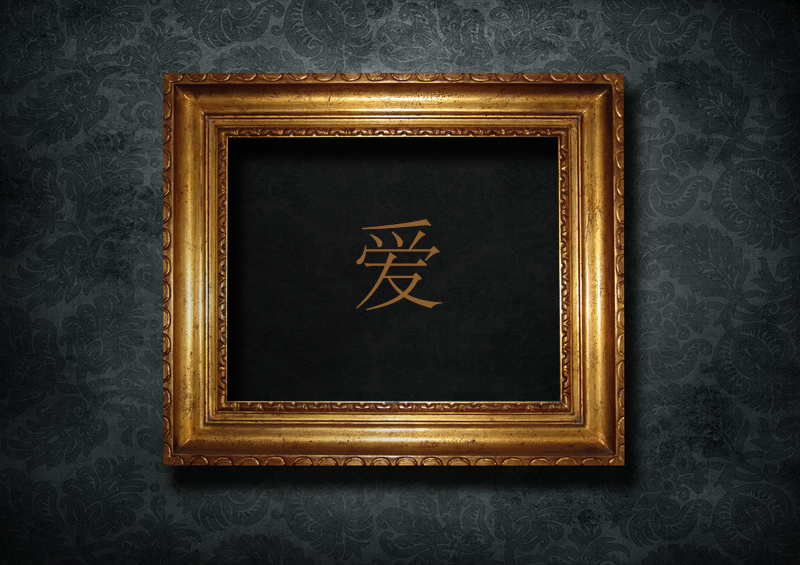

Mars & Venus, Allegory of Peace
French, 1770; oil on canvas
In this gentle allegory of peace by Louis Jean François Lagrenée, Mars, the Roman god of War, throws back the rich green bed curtains that frame the scene. As the drapery parts, the morning light spills in to reveal the form of the sleeping Venus, the Roman goddess of love. Mars gazes at her, utterly captivated by her beauty. Her love has tempered his fierce character, and his shield and sword lie abandoned on the floor. Echoing the lovers' bliss, a pair of white doves, symbolizing Peace, build a nest in Mars's helmet.
Lagrenée created his finest works, including this small, jewel-like painting, around 1770. The lavish folds of drapery, the delicate play of light over fabric and skin, and the rich, restrained palette combine to create a captivating beautiful image.
Source: The J. Paul Getty Museum, Los Angeles.
French, 1770; oil on canvas
In this gentle allegory of peace by Louis Jean François Lagrenée, Mars, the Roman god of War, throws back the rich green bed curtains that frame the scene. As the drapery parts, the morning light spills in to reveal the form of the sleeping Venus, the Roman goddess of love. Mars gazes at her, utterly captivated by her beauty. Her love has tempered his fierce character, and his shield and sword lie abandoned on the floor. Echoing the lovers' bliss, a pair of white doves, symbolizing Peace, build a nest in Mars's helmet.
Lagrenée created his finest works, including this small, jewel-like painting, around 1770. The lavish folds of drapery, the delicate play of light over fabric and skin, and the rich, restrained palette combine to create a captivating beautiful image.
Source: The J. Paul Getty Museum, Los Angeles.







Naissance de Venus
French, 1879; oil on canvas
Venus, known as the bringer of joy, Roman goddess of love and beauty stands on a shell in the middle of the ocean, surrounded by admirers. Two mermen use conch shells to trumpet her arrival as the angels that came to witness her birth ascend to heaven.
This painting is truly a tour de force for Bouguereau, standing just over 9’ 10” high, and just under 7’2” wide. Birth of Venus contains 22 fully worked out figures all of which come together to form an amazing composition. Bouguereau uses the goddess, Venus, as an exemplar of the Beauty in our lives.
Bouguereau’s Birth of Venus holds a strong resemblance to Botticelli’s Birth of Venus, which also depicts Venus with long flowing hair standing on a similar shell.
Source: Musée d'Orsay, Paris
French, 1879; oil on canvas
Venus, known as the bringer of joy, Roman goddess of love and beauty stands on a shell in the middle of the ocean, surrounded by admirers. Two mermen use conch shells to trumpet her arrival as the angels that came to witness her birth ascend to heaven.
This painting is truly a tour de force for Bouguereau, standing just over 9’ 10” high, and just under 7’2” wide. Birth of Venus contains 22 fully worked out figures all of which come together to form an amazing composition. Bouguereau uses the goddess, Venus, as an exemplar of the Beauty in our lives.
Bouguereau’s Birth of Venus holds a strong resemblance to Botticelli’s Birth of Venus, which also depicts Venus with long flowing hair standing on a similar shell.
Source: Musée d'Orsay, Paris


